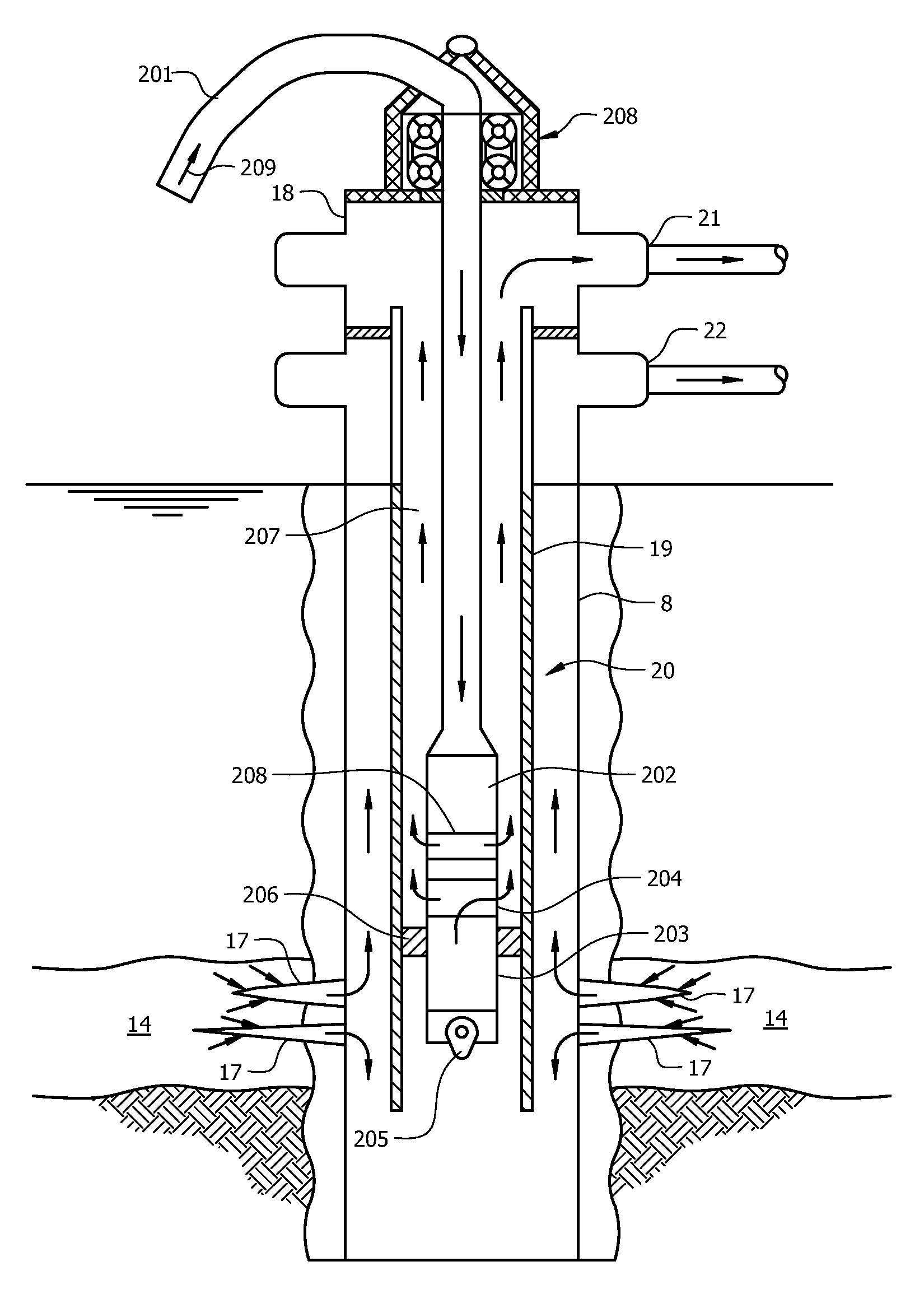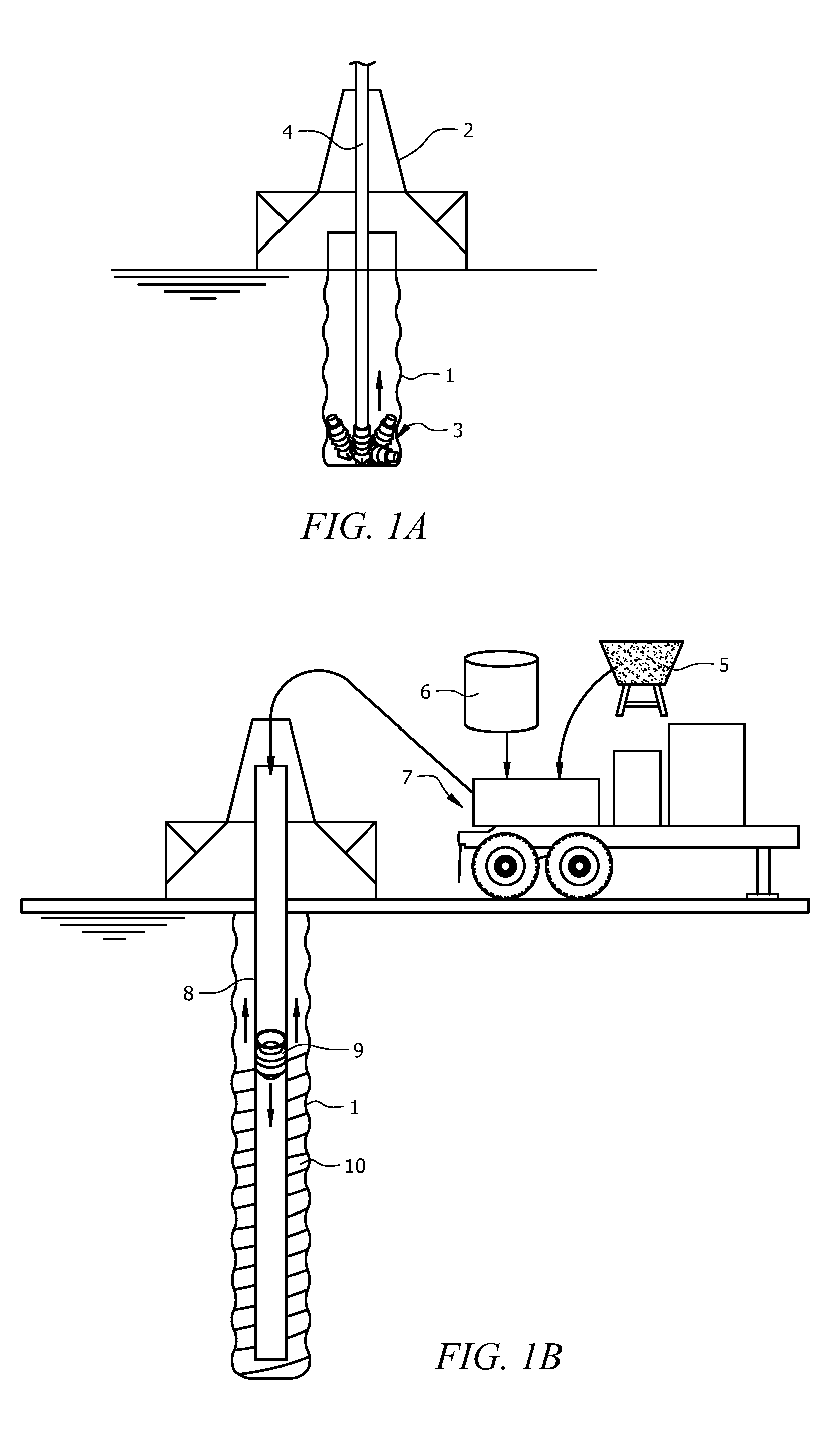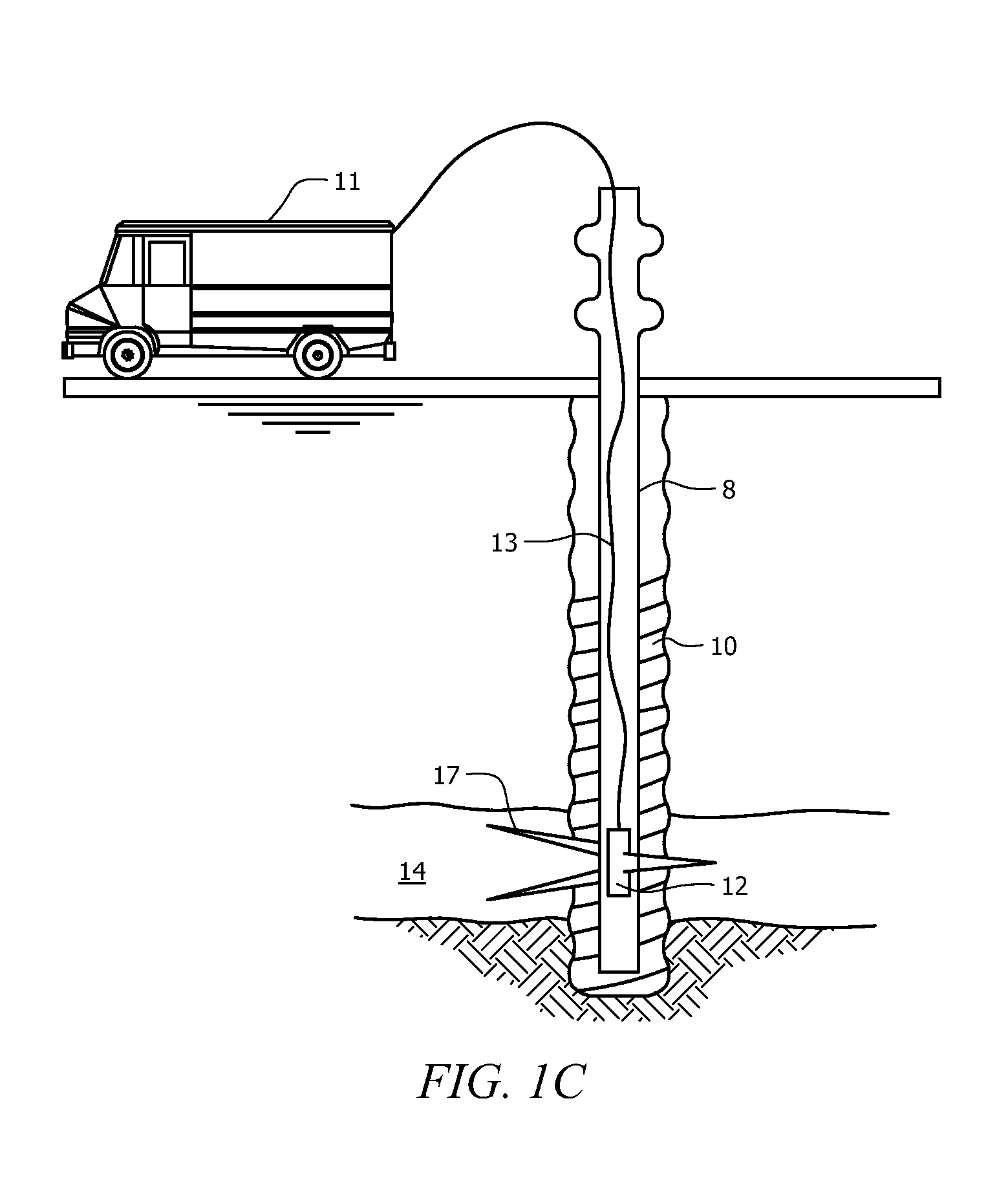When a fluid, such as
oil and natural gas, is being produced from a subterranean reservoir, the reservoir may not have sufficient energy, or the reservoir strata may have insufficient fluid
conductivity, to eject fluids to the surface at a commercial fluid flow rates.
This benefit, however, is typically only temporary because fluid production to the surface will usually decline as fluids are extracted from the reservoir.
As mentioned above, increased fluid production from a hydraulically fractured well having a velocity string is not maintained indefinitely.
Instead, as the
reservoir pressure continues to be depleted during fluid extraction, the fluid velocity in the coaxially inserted velocity string becomes insufficient to lift the well fluids to the surface at a commercial
production rate.
While, additional smaller velocity strings can be coaxially inserted to increase fluid velocity, this method has its drawbacks.
Further, inserting additional velocity strings does not address the decreasing reservoir energy as a reservoir is depleted of fluids, where the reservoir energy continues to decrease until it is insufficient to lift fluids to the surface at commercial rates.
Moreover, inserting additional velocity strings is inconvenient and not commercially expedient because to use the well configuration that was lastly deployed rather than extracting the final well configuration with an expensive rig intervention only to deploy some other configuration for further extracting well fluids at the current conditions.
As such, these known
artificial lift methods may not be best suited for extracting fluids from gas wells.
An example of such pumps is disclosed in U.S. Pat. No. 2,081,221 to Clarence J. Coberly. These conventional systems of hydraulically lifting fluids from oil and gas wells introduce significant environmental hazards because they place
high pressure hydraulic positive displacement
piston pump systems at the surface.
It is further known to those familiar with producing oil and gas wells with hydraulic pumping systems that the use of water as a power fluid is limited in cold climates.
This has many disadvantages, including extra energy use and the possibility of introducing hazardous chemicals into the environment.
The field of
dewatering gas wells or as it is often known in the oil and
gas industry as artificial
lifting gas wells, is reluctant to adopt the current methods of hydraulic powered submersible hydraulic motors, engines, compressors, and pumps as most are currently powered by surface positive displacement
piston pump systems.
These conventional art uses of surface located positive displacement systems are dangerous and often outlawed by city ordinances for many reasons.
In particular, there are likely risks associated with these systems, such as over pressurization of the surface equipment when a well
hydraulic fluid system plugs, or a surface valve closes on the positive displacement tri-plex pumps
discharge side, which causes a
high pressure release of hydraulic power fluid.
Further, the conventional positive displacement pumps placed at the surface have large dimensions that cannot easily be accommodated in a well conduit and hence are located on the surface of the earth or at best on small skids with fluid containments beneath them.
This configuration also introduces risks both at the surface environment and into a hydraulic power
system, as an inadvertent closure of a valve, or the plugging of a valve, can cause a rapid
pressure rise in the positive displacement pumps
discharge often resulting in a catastrophic rupture and leak of the hydraulic power system.
This catastrophic pressure rupture causes oil spills, fires,
pollution, and danger to humans.
Additionally, the conventional hydraulic power pumps surface arrangements have packing, and oil lubricants in their power ends that can leak and spill oil on the earth's surface.
Hence the conventional hydraulic pumping system for lifting fluids from wells have many drawbacks including continual and frequent oil changes, and pump maintenance further introducing the opportunity to have an
oil spill at the surface.
Additional drawbacks include a large surface
footprint, which makes the conventional systems difficult to house or encapsulate to contain leaks from the pump system.
 Login to View More
Login to View More  Login to View More
Login to View More 


